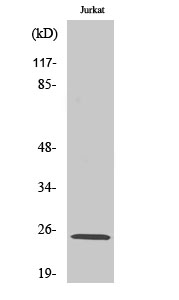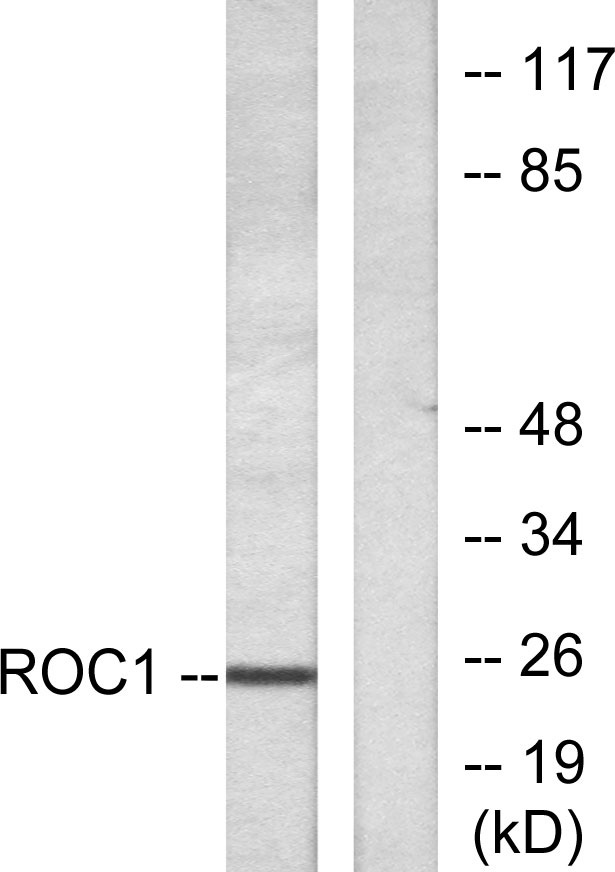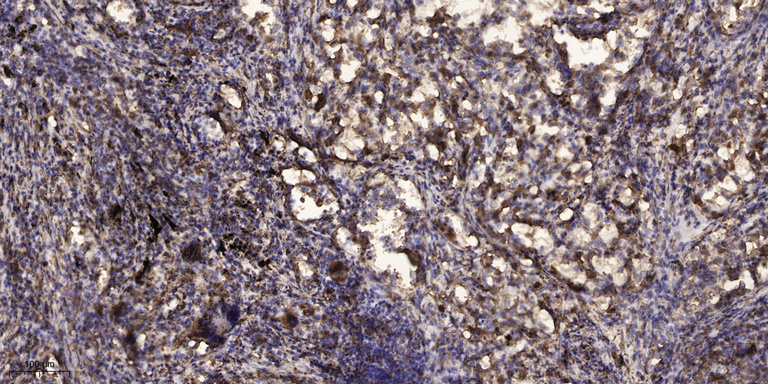Rit1 Polyclonal Antibody
- Catalog No.:YT4149
- Applications:WB;ELISA;IHC
- Reactivity:Human;Mouse
- Target:
- Rit1
- Gene Name:
- RIT1
- Protein Name:
- GTP-binding protein Rit1
- Human Gene Id:
- 6016
- Human Swiss Prot No:
- Q92963
- Mouse Gene Id:
- 19769
- Mouse Swiss Prot No:
- P70426
- Immunogen:
- The antiserum was produced against synthesized peptide derived from human RIT1. AA range:170-219
- Specificity:
- Rit1 Polyclonal Antibody detects endogenous levels of Rit1 protein.
- Formulation:
- Liquid in PBS containing 50% glycerol, 0.5% BSA and 0.02% sodium azide.
- Source:
- Polyclonal, Rabbit,IgG
- Dilution:
- WB 1:500-2000;IHC 1:50-300; ELISA 2000-20000
- Purification:
- The antibody was affinity-purified from rabbit antiserum by affinity-chromatography using epitope-specific immunogen.
- Concentration:
- 1 mg/ml
- Storage Stability:
- -15°C to -25°C/1 year(Do not lower than -25°C)
- Other Name:
- RIT1;RIBB;RIT;ROC1;GTP-binding protein Rit1;Ras-like protein expressed in many tissues;Ras-like without CAAX protein 1
- Observed Band(KD):
- 25kD
- Background:
- This gene encodes a member of a subfamily of Ras-related GTPases. The encoded protein is involved in regulating p38 MAPK-dependent signaling cascades related to cellular stress. This protein also cooperates with nerve growth factor to promote neuronal development and regeneration. Alternate splicing results in multiple transcript variants. [provided by RefSeq, Feb 2012],
- Function:
- enzyme regulation:Alternate between an inactive form bound to GDP and an active form bound to GTP.,function:Plays a crucial role in coupling NGF stimulation to the activation of both EPHB2 and MAPK14 signaling pathways and in NGF-dependent neuronal differentiation.,miscellaneous:Shows rapid uncatalyzed guanine nucleotide dissociation rates, which are much faster than those of most Ras subfamily members.,miscellaneous:Stimulation of the NGF and EGF receptor signaling pathways results in rapid and prolonged activation.,similarity:Belongs to the small GTPase superfamily. Ras family.,subunit:Interacts with MLLT4, the C-terminal domain of RALGDS and RLF, but not with RIN1 and PIK3CA. RLF binds exclusively to the active GTP-bound form. Strongly interacts with BRAF, but only weakly with RAF1. BARF and RAF1 association is dependent upon the GTP-bound state. Interacts with RGL3.,tissue specificit
- Subcellular Location:
- Cell membrane.
- Expression:
- Expressed in many tissues.
- June 19-2018
- WESTERN IMMUNOBLOTTING PROTOCOL
- June 19-2018
- IMMUNOHISTOCHEMISTRY-PARAFFIN PROTOCOL
- June 19-2018
- IMMUNOFLUORESCENCE PROTOCOL
- September 08-2020
- FLOW-CYTOMEYRT-PROTOCOL
- May 20-2022
- Cell-Based ELISA│解您多样本WB检测之困扰
- July 13-2018
- CELL-BASED-ELISA-PROTOCOL-FOR-ACETYL-PROTEIN
- July 13-2018
- CELL-BASED-ELISA-PROTOCOL-FOR-PHOSPHO-PROTEIN
- July 13-2018
- Antibody-FAQs
- Products Images

- Western Blot analysis of various cells using Rit1 Polyclonal Antibody diluted at 1:500

- Western blot analysis of lysates from Jurkat cells, using RIT1 Antibody. The lane on the right is blocked with the synthesized peptide.

- Immunohistochemical analysis of paraffin-embedded human Squamous cell carcinoma of lung. 1, Antibody was diluted at 1:200(4° overnight). 2, Tris-EDTA,pH9.0 was used for antigen retrieval. 3,Secondary antibody was diluted at 1:200(room temperature, 45min).


